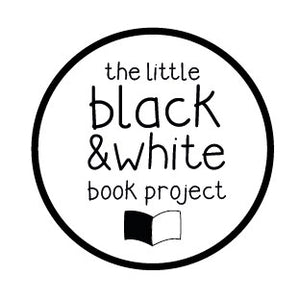In a nutshell
When your baby is born their field of vision is very small and your baby sees the world very differently to an adult.
Everything is blurry and all of those beautiful colours we see merge into one.
Amazingly your baby was able to distinguish between light and dark in the womb, and in the outside world it is still the contrast between light and dark that registers the strongest on their retinas.
Black and white images, being the highest contrast in light and dark available, is something their eyes can focus on.
Using images like these approximately 30cm away from their face can help exercise your baby's eyes, send strong signals to their brain and help the eyes learn how to co-ordinate together.
It's all great practice for focusing on objects around them ready for when their field of vision expands.
Facts about your baby's eyes

They work independently
At birth your baby's eyes don't work together like ours do. They have to learn how to co-ordinate - essentially point in the same direction at the same time. The more the eyes learn to coordinate, the more accurate the eye movements become and by default the more detail the eye and brain can detect.
It's this eye-brain feedback loop that can help build strong connections.

Their field of vision is around 30cm
About the length of a ruler, your baby's world is pretty small for the first 5 months of their life. Your baby will only be able to see items that are distinguishable by a distinct contrast in colour, the optimum combination being black and white. So make sure you place books and flash cards close to their face so they can get the most benefit from sensory playtime.

Baby's eyes change colour
Over the first year of their life you might notice your baby's eyes change colour. Eye color is determined by melanocytes and melanin in the iris. If only a little melanin is produced your baby's eyes will be more blue, a lot of melanin your baby's eyes will be browner or darker. This can take anywhere up to 12 months for the eye's to 'settle'. Ultimately this is all determined by genes.
Sensory playtime made easy
Sensory play is basically stimulating all of a child's senses, usually not all at the same time but honing in on one or two in a specific activity.
Black and white images are part of visual sensory play as they gently help exercise the eye and the brain.
Most importantly high contrast images are something your baby can interact with in an otherwise blurry world. And something you can both enjoy together in the early months and weeks.
It doesn't need to be complicated. Sharing books, patterns, pictures and your voice are more than enough as you get to know each other.
It's not complicated
Sometimes the 'science' behind why something works can feel overwhelming or end up putting unwanted pressure on you. We want you to know that you are more than enough for your baby. Your touch, your smell, your voice, your love are all the most reassuring things as they navigate that 4th trimester.
High contrast images are a nice addition to your everyday play if you would like to use them. They can be really beneficial and yes they are rooted in science but it is personal preference as to what you choose to include in your sensory playtime.
Please be comforted that we've done all the researchy bit so all you have to concentrate on is snuggles with your new bundle of joy. Oh and it's totally ok to need a break! If you want to sit and have a hot cuppa, black and white images can help keep your baby amused whilsts you have a breather.

And just so you know...
• High contrast images won't make your baby smarter...how would you even measure that?
• Not using high contrast will not be detrimental to your baby's development
• You don't need fancy products...black pen on white paper is as good a tool as any!
• Black and white isn't just for new borns, it can be a great part of sensory play at any age!
If you'd like to hear from an expert
We have a lovely blog post written by an optometrist (and mum!) over on our blog. It will tell you a little more about why high contrast is so effective.




